
Sine Function in Trigonometry
At the heart of trigonometry, we find three fundamental functions: sine, cosine, and tangent. Today, let's delve into the intricacies of the sine function, a concept that forms the bedrock of this mathematical discipline.
So, what exactly is the sine? Here's the lowdown.
Picture a right-angled triangle. In this triangle, the sine of an angle is defined as the ratio of the length of the side opposite the angle to the length of the hypotenuse. We usually denote the sine of an angle θ as sin(θ). In mathematical terms: $$ \sin(θ) = \frac{ \text{opposite side} }{ \text{hypotenuse} } $$ The sine can take on any value between -1 and 1, and it follows a cyclical pattern, repeating every 360 degrees.
Let's use an example to paint a clearer picture.
Suppose we have a right-angled triangle where one of the angles measures 30 degrees. The side opposite this angle is 10 cm, and the hypotenuse is 20 cm. In this case, the sine of the 30-degree angle would be:
$$ \sin(30°) = \frac{ 10 }{ 20 } = 0,5 $$
The sine of an angle can take any value between -1 and 1, depending on the position of the angle within the triangle.
To further our understanding, let's sketch this out.
Start by drawing a unit circle - that's a circle with a radius of 1 - with center at point O.
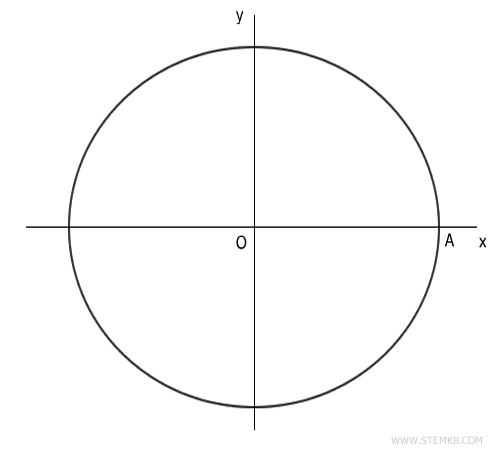
Next, pick any point P on the circle.
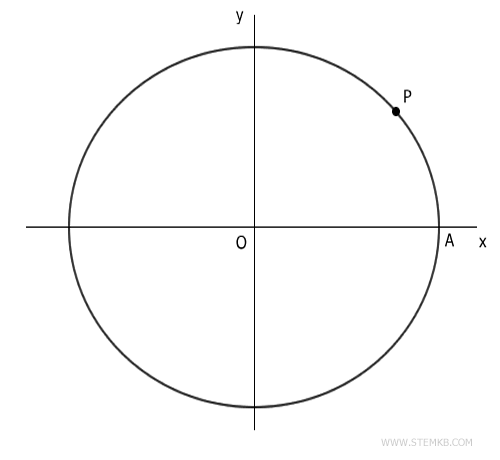
Now, form a right-angled triangle by connecting the center of the circle, O, with the point P via the hypotenuse.
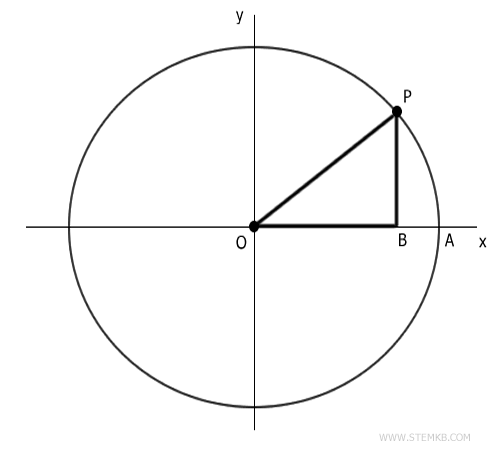
Consider the angle, denoted as θ.
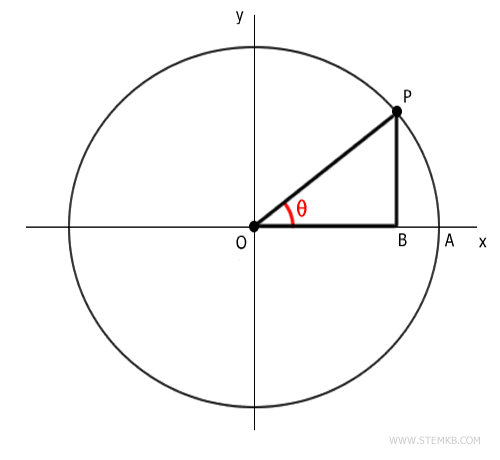
In this scenario, the sine is the ratio of the length of the side opposite the angle (BP) to the length of the hypotenuse (OP):
$$ \sin(θ) = \frac{\overline{BP}}{ \overline{OP} } $$
Because our radius, OP, equals 1 (the definition of a unit circle), the sine of the angle θ also equates to the length of segment BP.
$$ \sin(θ) = \frac{\overline{BP}}{ \overline{OP} } = \frac{\overline{BP}}{ 1 } = \overline{BP} $$
In simpler terms, within a unit circle, the sine of an angle is equivalent to the length of the vertical line segment from the circle's circumference to the x-axis.
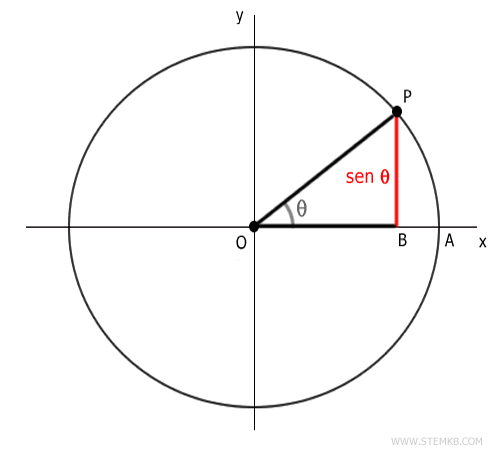
The segment BP is usually considered projected onto the vertical axis (OC).
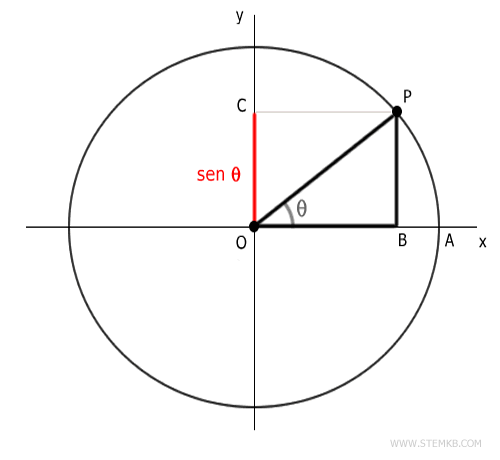
Especially, when the angle is less than 90 degrees, the sine is a positive value. As the angle increases beyond 90 degrees, the sine becomes negative. At exactly 90 degrees, the sine value peaks at 1.
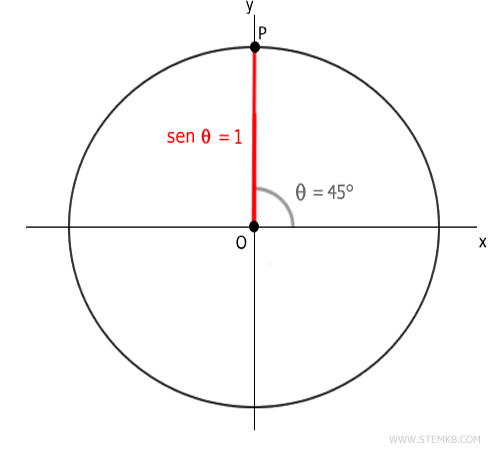
It's crucial to remember that the sine function is periodic; it repeats itself over regular intervals.
Specifically, the period of the sine function is 360 degrees (or 2π radians). This characteristic means that the sine of an angle remains consistent whether you add or subtract 360 degrees from the angle.
To illustrate, the sine of a 30-degree angle is identical to the sine of a 390-degree angle (since 390 = 30 + 360).
One final note: the sine of an angle θ is a dimensionless measure. This means it remains the same irrespective of the size of the circle, as it is derived from the ratio of two lengths.
With its pivotal role in numerous scientific disciplines, the sine function is among the essential trigonometric concepts you need to master if you're keen on enhancing your understanding of mathematics and science.

